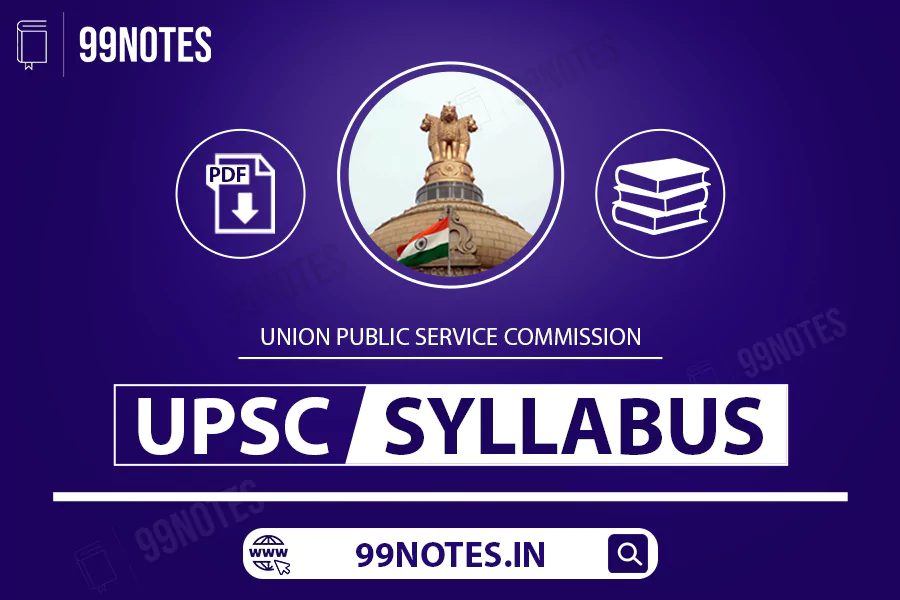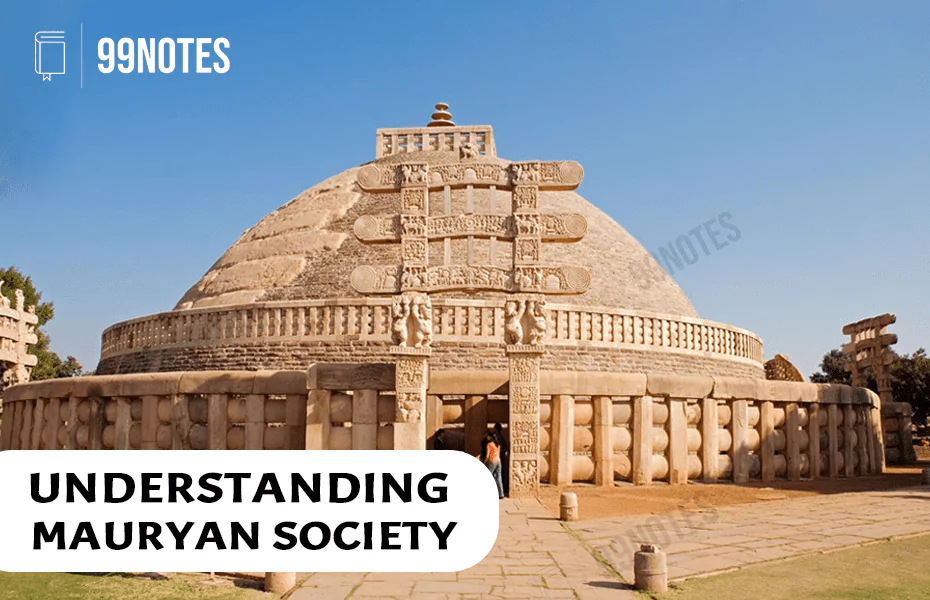Download UPSC Syllabus Download UPSC Prelims Syllabus PDF Click Here Download UPSC Mains Syllabus PDF Click Here Download UPSC Optional Syllabus PDF Click Here Understanding the Comprehensive UPSC Syllabus: Your Key to Success Are you planning to join the ranks of India’s finest civil servants? Then you’re probably preparing for the Union Public Service Commission (UPSC) examinations, one of the most prestigious and challenging tests in the country. The vast scope of the syllabus is one of the most daunting aspects of these examinations. At 99notes.in, we’re committed to making your journey simpler and clearer. This detailed guide on the…
Author: Team 99Notes
The Bhakti Movement in India Introduction of Bhakti Movement The Bhakti movement was a medieval religious reform movement that preached direct devotion to God without the mediation of a priest. It aimed to reform society by removing the boundaries of caste, creed and sex between the devotee(bhakta) and God (bhagwan). Bhakti is rooted in the Sanskrit word “Bhaj”, meaning to serve. ‘Bhakti’ literally means fondness for, homage, faith or love, devotion, worship, and piety. The central theme of the Bhakti movement is that when devoted to God, a person must forget all distinctions and boundaries. Main principles of Bhakti Movement…
Socio-cultural Impact of the Delhi Sultanate The Delhi sultanate introduced Persian art, architecture, and language, fostering a blend of Indian and Islamic cultures. It led to grow the Indo-Islamic art and the spread of Islam in India. Economy of Delhi Sultanate Agriculture North part of the empire produced Wheat, Oilseed East and south had rice and sugarcane. Two crops per year could be produced as the soil was fertile. Rice was grown three times a year. Other crops grown were Sesame, Indigo and Cotton. Reforms under Muhammad-Bin-Tughlaq (1325-1351) Increased the land revenue of the Doab region, due to which the…
Delhi Sultanate The Delhi Sultanate known as one of the India’s rich historical time-period. This empire rulers from the 13th- 16th century, played a pivotal role in shaping the country’s culture, architecture, and society. Delhi Sultanate was a series of Islamic dynasties that ruled over the Indian subcontinent. It began with Ghurid invasion in 1192, establishing first Muslim rule in Delhi. Over the period various dynasties, such as Slave Dynasty, Khilji Dynasty, Tuglaq Dynasty, Sayyid Dynasty and the Lodi Dynasty, left their marks on the region. Lets discuss in detail: Muizzuddin Muhammad, also known as Muhammad of Ghor, defeated the…
Chola Dynasty The Chola Dynasty is one of the longest-ruling families in the history of the world. It rose in the Sangam Age as one of the three kingdoms alongside Cheras and Pandyas. However, very little is known about the Cholas after the end of the Sangam age till the mid-9th century. The Origin of Chola Dynasty The Imperial Chola Dynasty(850-1070CE) The Imperial Chola dynasty was established with the accession of Vijayalaya in 850 CE. The important rulers of this dynasty are as follows: 1. Vijayalaya (850-871CE) Vijayalaya was the founder of Chola dynasty. He was initially a feudatory of…
Gupta Empire The Kushanas and the Satvahanas became weaker in the middle of the 3rd century after providing 200-year-long political and economic stability. Then, after a brief period of confusion, Guptas emerged on the scene in North India and Vakatakas in South India. The Guptas may have been of Vaishya origin. They initially belonged to the Doab region of the Ganga plains. Prayag was the most important city in the Gupta empire. Guptas initially adopted the title of Adiraja, indicating that they were vassal states of a larger kingdom. However, they gained independence in the second decade of the 4th…
Sangam Age The Sangam Age, a significant era in ancient Tamil history, is renowned for its rich cultural and literary achievements. The period approximately between the 3rd century B.C. and 3rd century A.D. in South India (the region lying south of river Krishna and Tungabhadra) is known as Sangam Age/Period. This period, marked by the gathering of poets and scholars at the court of the Tamil kings, produced an extensive body of literature that sheds light on the social, economic, and political life of the time. The Sangam Age is named after the Sangam Assemblies of Poets and academicians who met regularly in Madurai in…
We have several sources that help us to reconstruct the Mauryan empire. These can be classified as either literary sources or Archaeological sources. Literary Sources of Mauryan Empire These are the texts that describe the Mauryan Empire. These are either contemporary or non-contemporary. Contemporary texts – These are books written during the time of the Mauryan Empire. Non-Contemporary texts – Archaeological Sources of Mauryan Empire Numismatics – Study of coins – Name Metals used Rupyarupa/Karshapana/Pana Silver coins Tamrarupa /Mashaka Copper coins Suvarnarupa /Niskha Gold coins Sisarupa Lead coins Inscriptions – Indian inscriptions are engraved into stone or other durable materials, such…
Mauryan Economy Direction Trade routes South-West route Sravasti to Pratishthana South-East route Sravasti to Rajgriha East-West route Taxila to Patliputra following the river course of Ganga and Yamuna, known as Uttarpatha(modern-day Grand Trunk road) Mauryan Society during the Mauryan empire Free labour Karmaharas/Bhritakas Slaves Dasas Mortgaged Slaves Ahitaka Religion during the Mauryan Empire People in Mauryan Society were great patrons of Nastika Philosophy(Heterodox school of Indian Philosophy), which includes Jainism, Buddhism and the Ajivika sect. However, Hinduism too flourished during the Mauryan reign. Jainism ● Chandragupta Maurya converted to Jainism, abdicated his throne, and moved with his spiritual mentor Bhadrabahu…
Mauryan Empire The Mauryan Empire, foundation to India’s historical and cultural framework, flourished from 321 to 185 BCE, establishing itself as the first extensive political entity across the Indian subcontinent. Founded by Chandragupta Maurya around 321 BCE under the strategic guidance of his advisor Chanakya, this empire is renowned for its governance, economic prosperity, and promotion of Buddhism, especially under Emperor Ashoka the Great. Chandragupta’s will to power, overthrowing the Nanda Dynasty, marked the consolidation of a vast and diverse territory, ranging from the northwestern region of India, across the Gangetic plains, to the far reaches of the eastern and…



![Bhakti Movement: Origin, Main Principles, Causes, And Its Effect [Upsc Medieval History Notes] Everything You Need To Know About Upsc Syllabus](https://99notes.in/wp-content/uploads/2023/02/the-bhakti-momvement-banner-99notes-upsc.webp)




![Sangam Age: Literature, Map, &Amp; Dynasties [Upsc Exam Notes] Megalith And Sangam Age](https://99notes.in/wp-content/uploads/2023/04/megalith-sangam-age-99notes-upsc.webp)


![Mauryan Empire (321-185 Bce): Rulers, Map, &Amp; Administration [Complete Notes For Upsc Exams] Mauryan Empire- Ancient History Notes For Upsc](https://99notes.in/wp-content/uploads/2023/04/mauryan-empire-99notes-upsc-1.webp)
